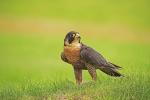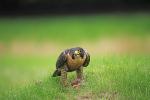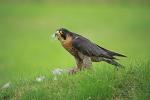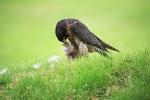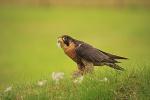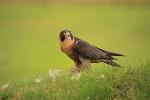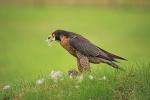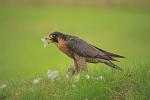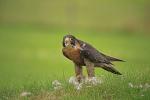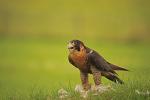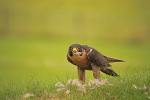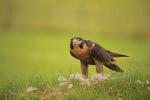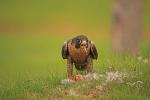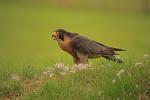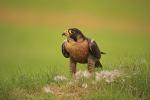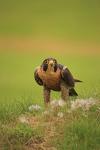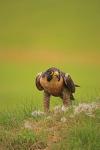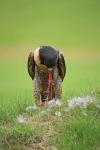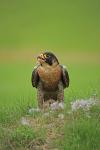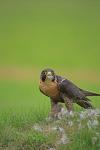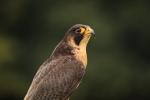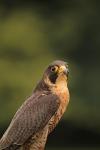Peregrine Falcon.
The peregrine is a large and powerful falcon. It has long, broad, pointed wings and a relatively short tail. It is blue grey above, with a blackish top of the head and an obvious black 'moustache' that contrasts with its white face. Its breast is finely barred. It is swift and extremely agile in flight.
The strongholds of the breeding birds in the UK are the uplands of the north and west and rocky seacoasts. Peregrines were at a low point in the 1960s due to human persecution and the impact of pesticides in the food chain. Improved legislation and protection have helped the birds to recover and they have now expanded into many urban areas.
However, they are still being persecute - illegally killed to prevent predation on game birds and racing pigeons, unfortunately North Yorkshire is one of the worst areas for predation in the country. They also have eggs and chicks taken for collections and falconry. Peregrines are a Schedule 1 listed species of The Wildlife and Countryside Act.
They eat mainly medium-sized birds, such as wading birds, pigeons and small ducks.
Peregrine falcons are the fastest creatures on the planet, reaching speeds of over 200 mph as they dive to catch their prey. They are also one of the most adaptable and can thrive in urban areas surrounded by humans, a pair of settled on the ramparts of York Minster for many years now and a pair have actively reared chicks on the cliffs of Scarborough on the east coast.
During the breeding season, they make their nests on crags and rock faces including sea cliffs, quarries and, increasingly, buildings in urban areas. Tower blocks, bridges and cathedrals offer the perfect urban alternative to high cliffs, while feral pigeons and starlings provide a reliable source of food.
British and Irish peregrine falcons are present all year round, though females and juvenile may move away from upland areas during the autumn. More northerly populations are migratory. Some European peregrines spend the winter in Africa while some Arctic birds travel to South America. These birds can fly as many as 15,500 miles every year!
Away from the nest, peregrine falcons are usually solitary and may travel widely. The name ‘peregrine’ means ‘wanderer’ or ‘pilgrim’.
|

